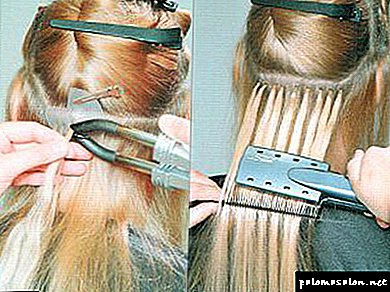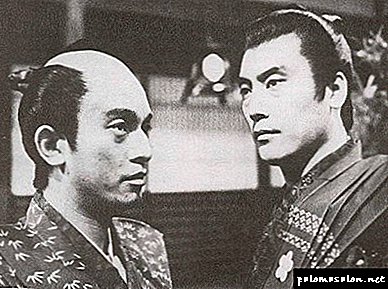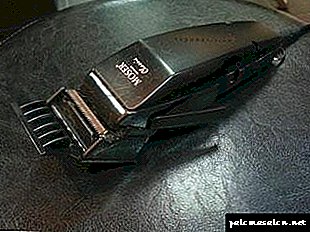Lice feed on blood, cause itching, headaches, insomnia in humans. Nit spoils the hair. Some believe that it is possible to pick up the parasite from animals, especially from street cats and dogs. To make sure of the opposite, it is worth figuring out how much lice live outside a person’s head, where they come from, how louses develop and whether they live on clothes.
How do lice and nits
The appearance of insects can not be called attractive. Parasites have a light yellow, light brown color. The length does not exceed 3 mm. Get their food with the help of the sting and suckers. 6 paws hold it on the skin.
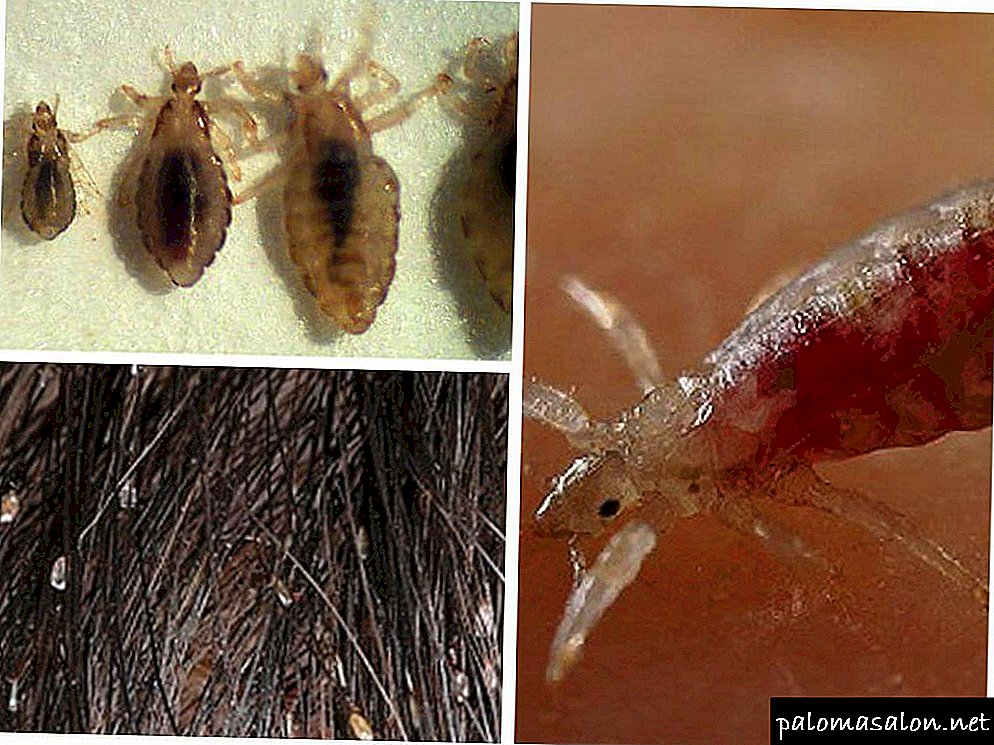
Louse nits look like dandruff. It can live only on a hair to which it is attached with the help of a sticky substance. Remove the eggs from the hair is not easy. This is the main difference between nits from dandruff.
Usually non-flying pests, which include lice, can jump high. But this parasite is deprived of this ability.
The development of lice has several stages:
- egg,
- first nymph
- second nymph
- third nymph
- adult individual.
The larva looks like an adult, but its color is lighter.
Lice life cycle
Lice live on the hair of the face and body. Can live:
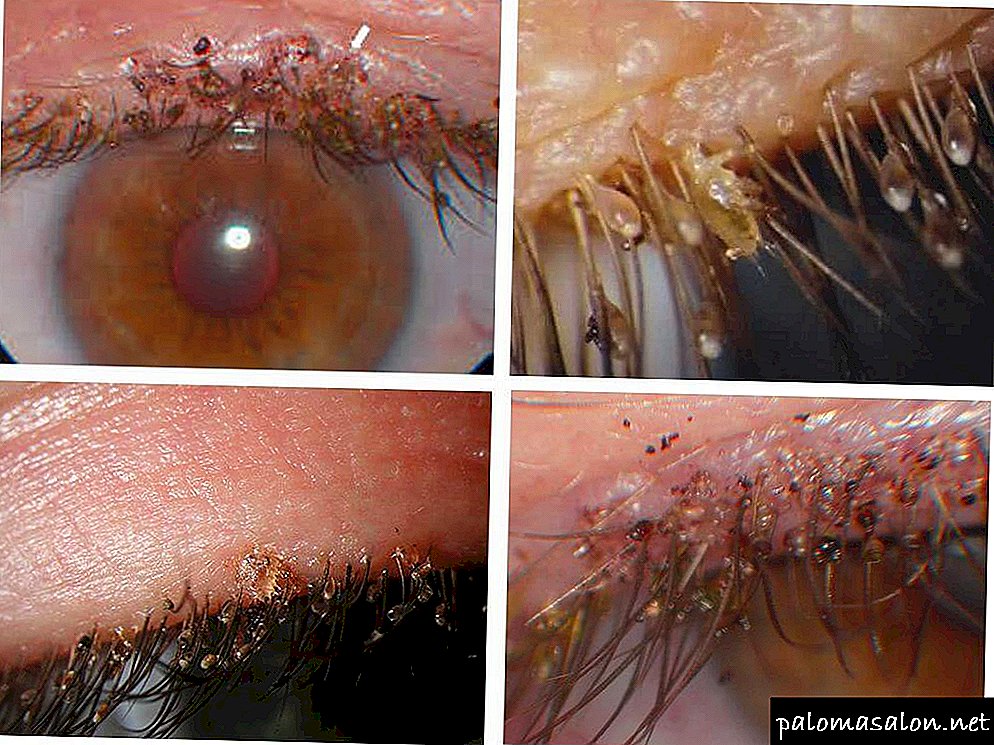
Individuals living on the head are different from pubic. The latter have more powerful paws and jaws, sucking blood more often. Without constant food can not live.
The female in her life lays up to 150 eggs, which are attached to human hair at some distance from the skin. Under favorable conditions, after 5 days, the nit turns into a nymph.
The larva must be fed in the first hour after leaving the egg, otherwise it will not be able to survive. After the first portion of blood molt occurs, and the pest changes its appearance. But it will become an adult when it replaces its chitinous cover two more times.
After the third molt, the imago stage begins. After a few hours, the adult male is ready for reproduction, and the female does her first laying on the human hair.
Many are looking for information about how much nit. But this question is incorrect. Only the egg of the parasite is called nits, from which a larva emerges in 5-9 days.
The life cycle lasts about a month. The female lays eggs after each feeding. In head lice, it occurs 4 times a day. Pubic same meal every four hours.
Where and how many lice live
Pests have a "narrow specialization." The structure of their body is such that they cannot settle on another mammal and are not adapted to live on wool. Everyone is accustomed to believe that the parasite can live only on the human body, but few people think about where the lice live apart from the head.
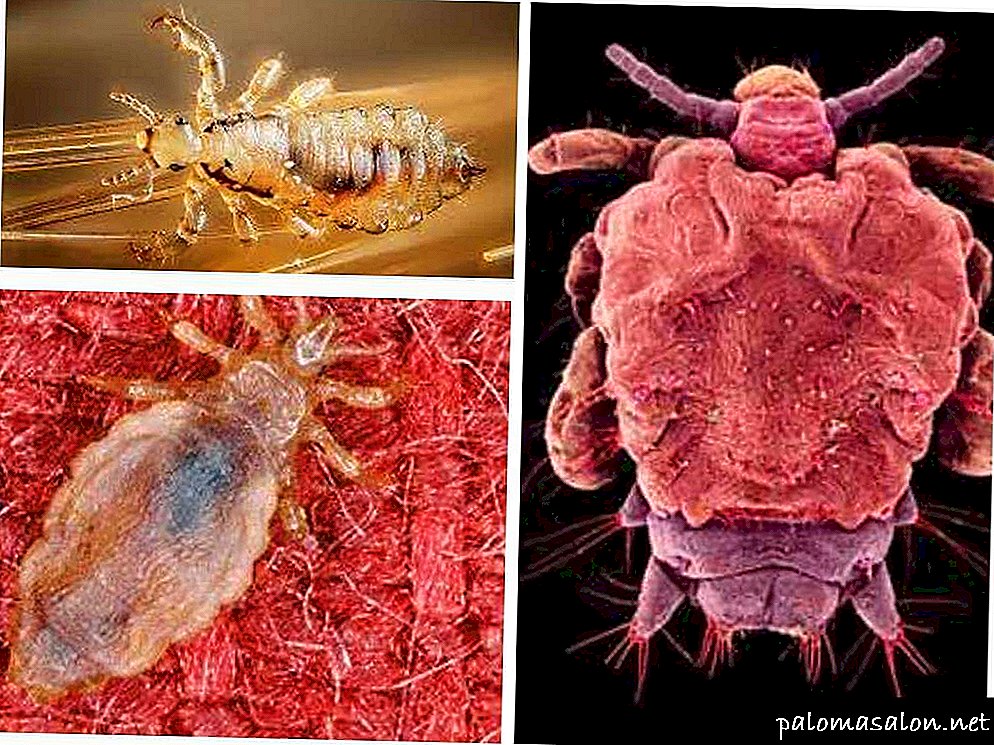
The insect is divided into three types, depending on the place of life:
- Cootie. She is attracted by the human smell, she is not capable of living on the body. The parasite lives in the folds of clothing, bedding.
- Pubic louse. Can live there, where grow tough hair - eyelashes, mustache, pubis, armpits.
- Head lice and nits. They live only on the head of a person.
Those who are faced with a disease such as lice, begin to wonder how many lice live without food. Each species is different in this respect from each other:
- Head dies after 2 days without human blood. A nit will go through its cycle of life completely, but the hatched larva, not finding food, can live only an hour.
- Pubic view will not last more than four hours. The egg will develop until it is the turn of hatching nymph, which immediately dies.
Hanging your human body for permanent residence is not suitable. Then the question arises whether lice can live in pillows and blankets. This type of insect is able to love the bed attributes, but only if it has access to the power source. Whatever type of lice are not related, they do not live without a person.
The pest likes to stay warm. Temperature control for lice is important. If the temperature drops to + 10 ° C and lower, it hibernates, and the nit slows down its development. Death of lice occurs at temperatures above + 45 ° C and below 0 ° C.
Frequently asked questions about lice life
People care about the same questions regarding the life of these insects. Here are the most common:
- How many lice live on a person's head - they usually die a month after their appearance. If a live parasite is left without a person at room temperature, it must find another victim within 24 hours. If the temperature is low - the pest hibernates.
- Whether lice live in bedding - this can happen to an unscrupulous person. The wardrobe type prefers to live in the folds of clothing adjacent to the body, but the insect can move to the bed and bed. No wonder the parasite in everyday life is called clothes lice. If the bed is changed, it will not stay there.
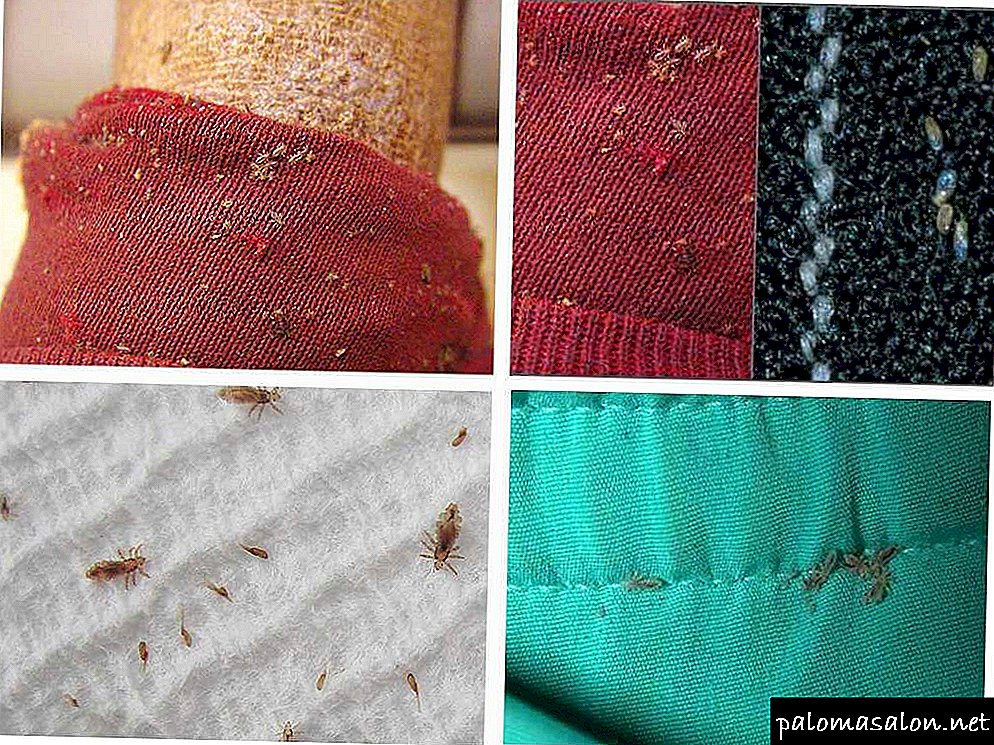
If even one louse has been seen on the head, you should carefully check the hair and make treatment. The parasite is small and difficult to detect. Having found a mate, one individual will quickly breed.
Insects, though not characterized by a long life cycle, but a lot of problems are delivered to man. Because of them, one has to limit oneself in communication and endure many inconveniences. Fortunately, getting rid of lice is easy enough. To do this, use pharmacy pediculicidal drugs or folk remedies.
Brief information about parasites
Lice - small bloodsucking insects, affect the head, groin area of man, clothes parasites live in the seams of clothing, pillows, blankets.
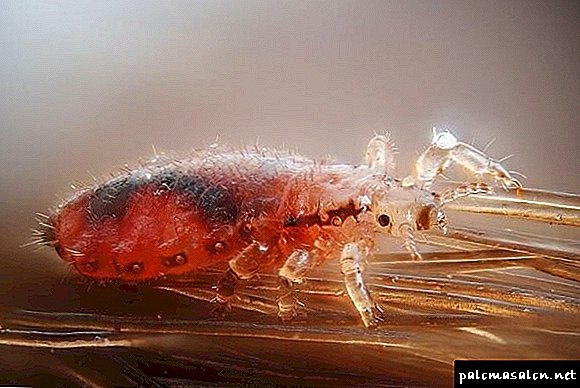
The structure of arthropods does not allow them to live outside the human body, since their paws, the reproduction process, the feeding organs, are all adapted exclusively for parasitism in humans. Lice are not able to adapt to life in other conditions.
For growth and reproduction parasites require blood. Lice feed several times a day. Insects feel comfortable at a temperature of 33–36 degrees; with a strong decrease or increase in thermal indices, all processes in the body of insects slow down, and lice die. With a slight decrease in temperature insects fall into a state of suspended animation.
When infected with lice diagnose head lice, the disease often affects children, but parasites can live on the body and adults of any social status.
Only clothes lice - a consequence of non-compliance with hygienic rules. The disease often develops in people without a certain place of residence, children from disadvantaged families.
Can lice live outside a person?
Lice can live outside the human body, but not for long.
How many days can parasites go without food? In the absence of food, the head blood-sucking insects die within 24–48 hours, pubic - within 8–9 hours.
When the ambient temperature drops to 10–12 degrees, head lice can remain inactive for up to 10 days. If during this period they find a new host, the whole process will be activated, the individual will begin to multiply.
Pubic lice can remain viable in stagnant warm water for several days, so you can become infected with parasites while swimming in fresh water.
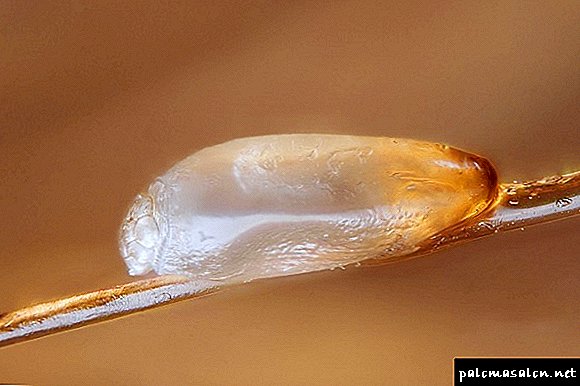
Nits are necessary for growth for growth, in its absence the larva will not be able to hatch, therefore the development process stops outside the human body, the individual inside the egg dies.
What do doctors say about parasites
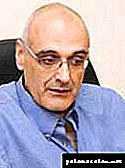
I have been engaged in the detection and treatment of parasites for many years. I can say with confidence that almost all of them are infected with parasites. Just most of them are extremely difficult to detect. They can be anywhere - in the blood, intestines, lungs, heart, brain. Parasites literally devour you from the inside, at the same time poisoning the body. As a result, there are numerous health problems, reducing the life of 15-25 years.
The main mistake - dragging out! The sooner you start to infer parasites, the better. If we talk about drugs, then everything is problematic. To date, there is only one really effective anti-parasitic complex, this is Notoxin. It destroys and sweeps from the body of all known parasites - from the brain and heart to the liver and intestines. None of the existing drugs are capable of this anymore.
In the framework of the Federal Program, when applying until October 12th. (inclusive) each resident of the Russian Federation and the CIS can receive one package of Notoxin IS FREE!
The louse lives not only on the human body, but also in clothes, things, but it still feeds on blood. Consequently, if clothes are seldom worn, regularly washed, ventilated in the sun or frost, the parasites die quickly.
The paws of the parasites cannot cling to the fabric, there is no food for them in bedclothes, they cannot lay eggs, so insects quickly die without a human.
Clothes or clothes louses have a slightly different structure, so they can go without food longer than pubic and head parasites. This period is about 3-4 days.

In the process of life, they rarely crawl on the human body, doing it only for the sake of food. If the clothes are washed or not worn for several days, the lice will die.
Body lice are characterized by a long period of life, remain active and able to reproduce for 40 days.
How to process the room
In the treatment of pediculosis, it is necessary not only to thoroughly treat the head with anti-pediculosis drugs, but also to thoroughly clean all surfaces in the room in order to avoid reinfection.
Effective methods of struggle
Lice, like many other insects, do not tolerate harsh odors, so to combat them you can decompose garlic cloves, citrus peel, tansy, wormwood, conifer branches in different corners of the room.
The safest way to get rid of parasites in the room is steam treatment: lice die quickly at high temperatures.
Things, toys can be soaked for an hour in a solution of 1 liter of boiling water and 15 g of soda, and then hung out in the sun or frost.
Our readers write
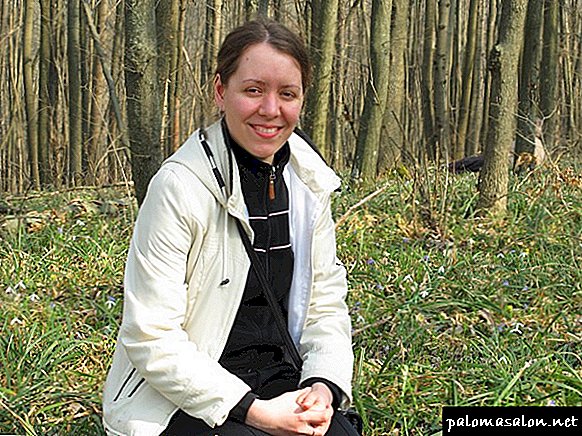
The past few years, she felt very bad. Constant fatigue, insomnia, some kind of apathy, laziness, frequent headaches. There were problems with digestion too, in the morning there was bad breath.
All this began to accumulate and I realized that I was moving in some wrong direction. She began to lead a healthy lifestyle, eat right, but it didn’t affect my health. Doctors also could not really say anything. It seems like everything is normal, but then I feel that my body is not healthy.
Then I went to one expensive clinic and passed all the tests, so in one of the tests I found parasites. These were not ordinary worms, but a particular species, which, according to doctors, almost everyone is infected, to a greater or lesser extent. To remove them from the body is almost impossible. I took a course of antiparasitic drugs that I was prescribed at that clinic, but there was almost no result.
After a couple of weeks, I came across one article on the Internet. This article has literally changed my life. I did everything as it is written there and after a few days, I felt significant improvements in my body. She began to get enough sleep much faster, that energy appeared that was in her youth. The head no longer hurts, clarity in consciousness appeared, the brain began to work much better. Digestion has improved, despite the fact that I eat now as anything. I passed the tests and made sure that no one lives in me anymore!
Who wants to clean your body of parasites, and no matter what types of these creatures live in you - read this article, 100% sure will help you!
Lice live everywhere, so the best way to avoid infection is to avoid places of large concentrations of people. If you suspect head lice in someone around, it is better to treat your hair with a pediculose shampoo or spray for prevention.
Interesting about head lice in the video:
You can not use someone else's combs, headgear, allow strangers to take their things. All clothes, bedding should be regularly washed, cleaned, ventilated outside in hot or frosty weather.
About garlic lice, including textile processing:
Every week it is necessary to inspect the head of the child for lice, especially if he attends kindergarten, primary school. The peak of pediculosis occurs at the end of summer – beginning of autumn.
Lice practically cannot live without a person, because for growth and reproduction they need to constantly feed on blood and be in a comfortable temperature climate. Nits are less resistant to adverse external conditions. To get rid of parasites, to prevent the risk of re-infection, during the treatment of pediculosis it is necessary to carry out a thorough sanitary treatment of the room.
What does a louse look like?
In order to be sure that a person has lice, you need to know what a louse looks like. This is a small insect whose body is up to 3 mm long. Louse is usually gray or brown, has all the necessary parts of the insect: legs (6 pieces), abdomen, antennae and cephalothorax. At the same time, the parasite has no wings at any stage of development. If you look at a louse without enlargers, it resembles an ordinary grayish bug. And the insect, known as a clothes louse, has a white color. The pubic parasite of dark color is closer to brown, and the body resembles a crab.
Symptoms of Pediculosis Infection
To diagnose the disease "pediculosis", it is necessary to identify a number of symptoms. Typically, this is:
- Reduced immunity.
- Increased drowsiness.
- Chronic fatigue.
- Depression.
- Frequent headaches and spasmodic pains of internal organs.
Also, the main sign that a person has lice is the detection of bites and scratches. The fact is that parasites feed on blood throughout the entire period of development and existence. This raises a logical question: how many lice live without a person outside the head?
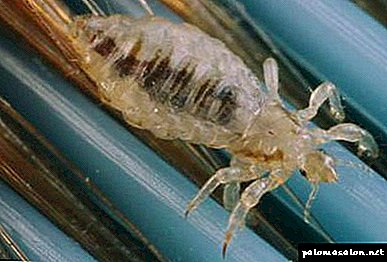
Can a louse live without a person and for how long?
The risk of contracting head lice is present in virtually every person, regardless of their financial or social status, age or gender. Infection can occur in any state institution, school, hospital, elevator, or vehicle. Once on the human body, the parasite begins its reproduction very quickly. Infection can occur through contact with clothing, bedding, personal hygiene items (combs), or in objects around people. But in the latter case, how long the lice live outside the head depends on the speed of the parasite population per person. Also, personal hygiene does not provide 100% protection against lice, one contact with the patient can lead to the transfer of the disease.
In the first days after contact, it is possible and not to identify the disease, provided that the insect does not appear on the eyes. The fact is that the parasite in a single copy does not cause any inconvenience to humans. But it’s not worth it to expect that a louse caught on a person will leave on its own. Insect just does not let his new victim. The parasite firmly clings to the hair, while actively proliferating. For a period of thirty days, one female lays up to one hundred and fifty eggs - nits. In this case, a logical question arises: how long does the louse live outside the head? The answer is simple: an insect can live no more than two days without food. But if the ambient temperature drops to 10 degrees Celsius, then the louse is able to survive the hunger period up to 10 days.
Can nits live separately from the person?
Nit is a louse larva. For its full and proper development requires one condition - the human body and its warmth. Under other conditions, the larva may die.But under favorable temperature conditions, the nit goes through all stages of development safely, and your louse is born. But if for a short period of time the newly appeared parasite does not have access to food, that is, blood, the insect will die. So, how many lice live outside the head, depends on access to human blood.

The habitat of lice on a person
A louse is a parasite that is not adapted to exist without man and his blood. Insects that are parasitic on the human body are not able to exist on other mammalian species. That is, a human louse lives only on a person and cannot survive on another animal. The only kind of food of individuals is blood. Lice do not feed on hair, as some misguided believe. Such an opinion could arise from the fact that the louse firmly clings to the hair in order not to fall from a person when he performs hygienic procedures or simply scratches his head.
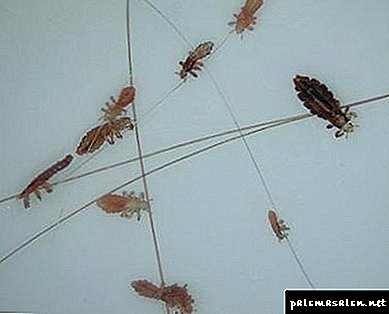
In nature, there are three types of human lice:
Head individuals parasitize on the human head, in preference - long hair. The transfer of insects is possible from one carrier to a new host with minimal contact. And how many lice live outside the head and body of a person without access to food? In the process of moving from one person to another, the maximum lifespan is up to forty-eight hours. The parasite must be fed or awaits its death. Nutrition lice occurs for 24 hours, while the parasites are applied numerous bites.
The pubic parasite infects areas with tough hair. It can be a mustache, eyebrows or eyelashes, as well as the axillary region and vegetation on the human genitals. The transmission path of such lice is sexual or contact.
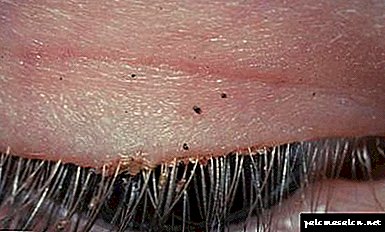
The wardrobe type of insects lives on a person’s clothing, in dirty bed-clothes, especially in its folds and seams. The parasite moves from tissue to humans to saturate with blood. In the process of evolution, the parasites are so adapted to the environment that it is not so easy to get rid of them by ordinary means.
How to deal with lice and nits
The fight against parasites can be waged in several ways. This may be specialized drugs or folk methods. However, the most effective are special means - insecticides. However, their use has a number of contraindications. These are pregnancy, childhood, allergies and asthma. In such cases, milder agents may be used. Or resort to natural recipes. It should be remembered how much lice live outside the human head - up to 48 hours.
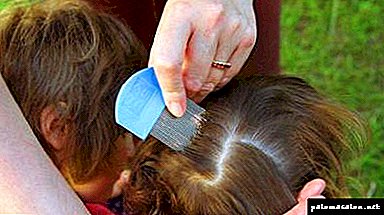
The natural means of combating parasites include:
- cranberry juice,
- vegetable oil,
- decoction of tansy,
- juice or decoction of Cheremitsy and wild rosemary,
- cosmetic hair spray.
When applying these products to the hair, lice and nits die, after which they are usually combed out with a comb. If you managed to comb the louse, but it is still alive, then you should remember how many lice live outside the head. It depends on how quickly the insect gets on the person again. Therefore, all combed individuals should be destroyed immediately.
How to avoid lice infestation
The process of getting rid of lice is rather unpleasant, so you should follow some rules to avoid infection by parasites:
- do not use other people's personal hygiene products for the head and jewelry (towels, combs, combs, hairpins),
- to maintain hygiene
- systematically check on the infection with head lice of all family members,
- Do not wear other people's hats.
Observing these simple precautions, you can save yourself and your loved ones from such an unpleasant illness as pediculosis. After all, everyone now knows how much lice live outside the head and body.
Where can lice live?
If a person has pediculosis, infection can occur not only directly through contact with the patient. With hair parasites can fall on the underwear, on the bed and on the pillow. Pubic lice may be in underwear. But only adults can dwell on these things. Nits live only on the hairy parts of the body.
Since vsh lives due to blood, for a long time without a “host”, i.e. human, they cannot exist. Therefore, whenever possible, they always move to the body to feed on blood.
In addition to bed linen and personal items, they also live in the folds of clothes that the patient has worn, on upholstered furniture and on mattresses. Due to the rapid reproduction and contact with a favorable environment, parasites can become infected in baths, saunas, swimming pools, on the beach.
There is a risk of infection even when swimming in the pond. They can live in any public places and even in transport.
Only man is their host, on which they can parasitize, since these insects feed exclusively on human blood. Never lice are not put on the hair of pets and other animals.
Also, many believe that if the hair is colored, insects will not grow on them. During dyeing, adults may die due to the presence of hydrogen peroxide in dyes. But on the nits, this composition is not valid.
Therefore, over time, they will mature and begin to multiply. Hair coloring is not a remedy in the fight against head lice. And already painted hair is not an obstacle to their reproduction. The main thing that they need is human blood, which does not change its composition after staining.
How many ectoparasites live on a person’s head?
Since a person is a “host” for parasites due to the blood they feed on, lice can live on their hair permanently. And only effective treatment will get rid of them.
- Once on the hairy part of the body, after a few days, adults begin to actively reproduce. They immediately lay from 2 to 5 eggs, which are attached to the hair with a special adhesive substance. These eggs are nits, which are very difficult to remove mechanically.
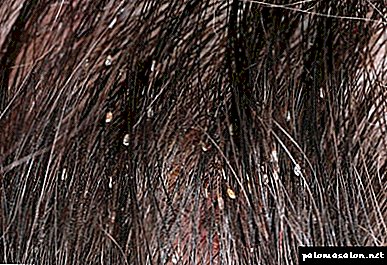 The development of nits lasts about 8 days. Then there are insects, which are called nymphs. They are a bit like adults, but they have a lighter shade. The nymph is smaller and has an underdeveloped reproductive system.
The development of nits lasts about 8 days. Then there are insects, which are called nymphs. They are a bit like adults, but they have a lighter shade. The nymph is smaller and has an underdeveloped reproductive system.
Its development lasts 5 days. For the development of nymphs must go through 3 stageswhich are expressed in the change of chitinous cover. The nymph is growing, and the cover is not there, so it changes it, since it no longer fits in size. After 10-14 days the nymph turns into an adult. Further, the male fertilizes the female, and she begins to lay eggs. The whole cycle of development from the larva to the adult individual is about 2-4 weeks. Insect life is about a month. But the development of parasites continues, because in its life an individual lays up to several hundred eggs.
How quickly they die without a "master"?
The life of insects depends entirely on the ability to feed on blood. It is on the human body that their full cycle passes. Without blood supply, they cannot even lay eggs. An adult should eat at least 6 times a day. Therefore, lice can not live without a person.
If suddenly the insect for any reason was outside the human body, left without food, it can live a maximum of 3 days. If during this period they can not feed on blood, their death occurs.
There are situations when parasites live longer. If the air temperature drops below 10 degrees, insects hibernate, resulting in a slowdown of all their vital processes.
In this case, the life of parasites can be 10 days. But in any case, the absence of human blood leads insects to starvation. Parasites die within an hour. Insects live on the hairy part of a person as long as they can feed on blood.
Is head lice transmitted through things and other objects?
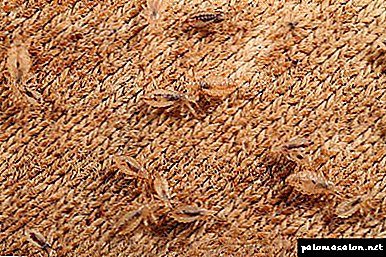 Fleshy lice can live for a long time on clothing or in its folds. If the louse is a pubic or head louse, they definitely need food. Therefore, they are at every opportunity trying to get on the human body. For some time, lice can live without a "master".
Fleshy lice can live for a long time on clothing or in its folds. If the louse is a pubic or head louse, they definitely need food. Therefore, they are at every opportunity trying to get on the human body. For some time, lice can live without a "master".
They are very easy to catch. To get infected in a few minutes, it is enough after the sick person to use his personal belongings:
Often infection occurs when visiting baths, saunas or beaches.
Therefore, even when visiting pools or reservoirs contamination is possible.
In order not to become infected with pediculosis, it is necessary to monitor body hygiene, use only your hygiene items and avoid contact with patients. When infection is necessary to immediately begin treatment.
Habitats
Three types of lice parasitize a person: clothes, head and pubic. Each of these species lives on a human body in its strictly defined place. The statement that lice live only on the head is fundamentally wrong. Let's see where the lice live apart from the head.
Head lice live exclusively on the head, clothes - hiding in the folds of clothing, and pubic are an exception, because they can live on almost all parts of the body covered with hair, but since they are transmitted mainly through sex, they are localized, mainly on the vulva, lower abdomen, in the groin area.
Head lice live on the scalp, and are more common in women and children. They affect mainly the occipital part, neck and the area behind the ears.
Do lice live in dyed hair and how long do they occur more often? As for the type of hair, this type of insect can live in any hair short, long, straight and curly, as well as dyed. The main thing for parasites is to have access to the scalp in order to feed on human blood.
It is believed that if you dye your hair, you can get rid of lice. In fact, all ammonia paints are diluted with hydrogen peroxide, and it, in turn, has a destructive effect on parasites.
It will be much safer to purchase specialized shampoos and lotions against pediculosis at the pharmacy, for example, “Para Plus”, “Nok”, “Nittifor” and others.
How many lice live outside the owner?
Lice survive only at the expense of its owner, in which they parasitize. Can and how much lice live outside the person? Each type of insect can only live on a particular mammal.
Head human louse will never parasitize on horseback. Just like those insects that live on animals will never go to humans.
The opinion that lice are transmitted from domestic animals is fundamentally wrong. Blood-sucking insects feed frequently and in small portions, and females bite more often than males, but how many lice can live without a human?
A head louse deprived of food in the environment can exist without a person for about 2 days, or more precisely, then about 55 hours - that’s the whole term, how many lice without a person live.
Ways of transmission
The main and most common way of lice transmission is contact, from person to person. This can occur with hugs, kisses, and other close contacts.
Parasites can also be transmitted through personal care products, hairbrushes, hairpins, hair elastics and hats.
Most often infection with pediculosis occurs in the summer, in places of large concentrations of people - in children's camps, kindergartens, etc.
No one is insured against infection with head lice. Of course, systematic hygiene procedures are the main methods of prevention, but they do not exclude the possibility of infection.
And the process of reproduction of lice from the moment they hit the head is carried out continuously, individuals increase exponentially. If you do not take any measures to eliminate parasites, they will live on the scalp indefinitely for a long time.
How many lice live outside the person?
How many lice live outside the head? A louse is a parasite on the body of a person or animal. She is not able to live outside the body. Lice are usually parasitic on a person's hair. Lice can live on the body of individual species of monkeys.
However, there they feel less comfortable. In addition to monkeys, lice can only be found in humans. Outside of the head, these parasites will live exactly as long as they can go without food. After all, they can only eat blood. The cause of their death will be hunger.
Stages of development
All varieties of parasites are perfectly adapted to the places where they live. They have their own way to multiply on the human body. The female in her hair lays an egg, which is also called a nit. The formed larva immediately falls on the skin of the human scalp. She immediately begins to suck blood.
The life cycle of each species has its differences. The development of lice on the human body is fast. For active life parasites require a lot of energy. Head lice a day eat 3 or 4 times, and pubic - every 3-4 hours.
Nits develop from 7 to 10 days. Body lice eggs can develop up to 2 months, provided that the nits develop at room temperature. At low temperatures, development can be delayed up to a year.
When the temperature drops to -1 ° C or lower, nits can live only one week. With regard to the development of the nymph, or larva, the process also proceeds faster - under favorable conditions in 15-20 days. Adult lice live for 40-46 days. The life expectancy of insects that live on garments is about 40 days.
The above data are disappointing. On the scalp in 1.5-2 months after infection will already inhabit a whole population. After 3 months, the parasites will begin to cause inconvenience to their host. In humans, one can observe pronounced signs of pediculosis.
Despite the fact that lice life is fleeting, she manages to go through several stages. The insect has only 3 molts. They start every time when the chitinous "clothes" for the nymph becomes small. When the third molt ends, the nymph becomes an adult insect. The female can lay 2 - 4 eggs per day. During its short life, your lice have time to lay 140 eggs.
When the larva hatches from the egg, the insect can pierce the cover of the nits with its jaws, but is not able to get out of it by itself. The larva begins to actively breathe. The air passes through the digestive system of the insect and out through the anus.
When the air accumulates at the bottom of the nits in large quantities, it pushes the larva out of the cap, which falls on the skin of the scalp and begins to suck blood.
How to get rid of the parasite?
Knowing that lice live outside the head for not too long, you need to find an effective way to get rid of them. These not harmless creatures among other things are carriers of such dangerous diseases as typhoid.
You can learn about pediculosis by characteristic signs. The person is tormented by an itch. He has bluish marks on his skin. A person's health and mood worsens, sleep is disturbed. If during the inspection were found uninvited guests, you must go to the pharmacy. Tell us about the problem, and the pharmacist will advise you the best means.
Use the drug as recommended. Prepare a comb with frequent teeth. It will help remove adult individuals and nits. The main condition for complete disposal of parasites is to repeat the treatment of the affected area after 5-7 days to consolidate the result.
It is necessary to do this, because lice live without a person for several days, and if suddenly the disappeared individual “decides” to return, preventive measures will be necessary.
Lice have nowhere to run: they feed on blood. If you took the drug, and it does not have any effect on this type of lice, you should not use it several times in a row.
Sometimes you can apply a radical way - shaving bald. Combing is much more common. The method works great in combination with the use of drugs. Special combs quickly release hair from nits and lice. They are not difficult to use. Treat the head with the tool.
Carefully comb each strand of hair. Parasites will be stuck in the teeth of the ridge. The combing procedure must be performed within a month. Mechanical method of getting rid of parasites has no contraindications. It is suitable for everyone.
Combing is useful: a head massage has a beneficial effect on the condition of the hair. True, the mechanical method is rather time-consuming. If there is no relevant experience, the procedure is best done every day.
Can lice survive without hair?
How long do lice live without a person and whether our ancestors knew how to survive without hair. After all, the method of shaving on bald is still practiced, which guarantees the death of the nits. Therefore, if you need a fast 100% effect and the size of the hair is not critical - you can resort.
A louse is an obligate and extremely highly specialized insect. How long a human louse (Pdeiculushumanus) lives without hair on its head and its pubic sister (Pthiruspubis), the entomologists give a definite answer. They absolutely can not adapt to a different habitat other than the human body.
There are exceptions when these parasites have adapted to life on some species of primates. But it is noticed that they are extremely uncomfortable on the monkeys hairline, moreover, it is difficult to reproduce.
Lice live without a person outside the head, if the total life cycle is not more than two months. The whole process from egg to imago (a full-fledged adult) is not more than two weeks under favorable conditions. If the temperature regime does not correspond to the norm, the development process can be delayed up to a month.
Development stages
One clutch of an adult female is about 3-5 eggs, which it sticks together securely with human hair. These are nits, resembling the appearance of dandruff, rather difficult to remove from the hair. The development stage of nits lasts an average of one week.
After the first feed with blood, the first molt begins, then the larva degenerates into a nymph. After three molts, chitinous cover is formed and the insect becomes an adult, capable of laying up to 150 eggs in its life, which indicates excessive fertility of the lice.
Lice can not live without hair and without a host. It is worth considering that human lice have subtypes, there are three types of lice:
Each species has its own habitat on the human body and its means of combating parasites. Rarely what nits live without a person, because for them it’s like breathing without air. Nit is a dependent parasite, and the initial stage of development. They are in a hard shell, where they can last several years before cutting hair.
Some interesting facts about lice life:
- A louse lives without a person and without blood, but extremely little. Lice are adapted to live only on humans. The whole construction of their body and arthropod legs is designed to cling to human hair. Without a man they die of hunger,
- Pubic and head parasites live only in the hair, as they are not able to lay eggs and fully multiply on the linen,
- Lice can live without a person and without food. A louse, and even more so a nit, a wingless insect that cannot fly, jump, or move long distances. They cling tenaciously to their hair, thus moving along it and living in it,
- If the insect enters a humid environment, the lifespan can be doubled. It is for this reason that it is recommended to swim only in the treated ponds,
- Lice do not appear as a result of the disease, exclusively mechanically when in contact with an infected carrier.
- Lice live for several days without food if they have lost their habitat - their hair and body.
Hunger for lice is the most pressing question for their survival. Under normal conditions, the parasite can withstand an average of 2-3 days without feeding human blood. If the temperature is lowered to 10 degrees, lice can stand up to 10 days without food.
How much does a head louse live without a person? A head louse needs 4 tricks. Write it, if it accidentally crawls, falls on a pillow or was combed out, then it will be able to live no more than two days without its own breadwinner.
Body lice are adapted to settle and live on clothes, crawling on a person's body when dressed. They settle in the folds of clothes, duvet covers, etc. On the body crawl only for meals. While maintaining personal hygiene and frequent change of clothes, this subspecies dies out rather quickly.
Does a clothes louse live without a person? Adults live for about 1.5 months, finding themselves without a host can live no more than 3-4 days. Despite the fact that the population lives on clothing, they can only eat human blood.
Head and pubic parasites are easily exterminated by chemical preparations or special shampoos based on insecticides.
Linen louses without a person also can not live long. Many are interested in what is the difference between clothes and laundry lice. This is the same subspecies. The opinion that laundry lice can settle their population in bed linen is wrong. Ectoparasites are accustomed to hiding in secluded places, and not in open space. Accordingly, the time of survival without a host is not more than 3-4 days.
In nature, there are cat, dog and other lice subspecies. But they are not dangerous for people and do not take root on a person. Each subspecies lives exclusively on its breadwinner and feeds only on its blood.
Methods of dealing with parasites
Knowing how many days lice live without a person, we can assume that you can deal with them in various ways:
- differential high and low temperature regimes
- chemical treatment with insecticides or popular recipes,
- mechanical way
- using fasting
- with the help of pungent odors.
What methods are considered the most effective. It is known that lice feel comfortable at a temperature of about 30 degrees. Ectoparasites do not tolerate cold, at zero degrees, they fall into hibernation, with minus die. But even if you go outside without a hat, there is no guarantee that all parasites will be destroyed.
If you apply specialized means of protection, then a louse without food in this case will not live a day, since it is a wild stress for her. The most common and fastest way to use shampoos. The most popular manufacturers: Pedilin, Parasidosis, Paranit, Itax, etc.
Sprays are convenient and popular, but are considered less reliable due to the fact that some parts of the head may not be affected. The most famous: Nyuda, Pedikulen Ultra. Emulsions are quite effective, but require caution when using.
If you use traditional means of struggle, the effect on nits will be about the same as above. There is the easiest, but the most laborious way:
Brushing method
You will need: a comb with frequent teeth. Your actions: Straighten your hair with fine strands and carefully comb each strand. Pay attention to the presence of nits that need to be removed.
With vinegar. Regular 9% or apple cider vinegar diluted with water in a ratio of 1: 2. Make up the skin and hair. Vinegar has a destructive effect on the lice shells that die from it.
With ether. The use of essential oils is considered very effective. In the usual vegetable oil, add a little any essential, such as: tea tree, lavender, cypress, eucalyptus, menthol, rosemary or geranium.
Use a copious amount to treat the entire head, wrap with polyethylene, hold for 2 hours, comb the dead insects well. Wash the head in the usual way.
Tansy and wormwood to take in equal proportions at the rate of 1 tbsp. a glass of boiling water. Boil for 5 minutes, strain and cool. Handle this composition head.
For complete destruction it is recommended to carry out the processing procedure repeatedly. It is good to make a complete complex treatment of the apartment with the help of wet cleaning and surface treatment with an insecticidal agent.
Knowing how much lice live without food, it is useful to leave the apartment for 2-3 days. Parasites outside a person do not last long, losing their usual habitat dies.
User Reviews
Alina Kayun: “I sent my son to summer camp, the reviews are excellent. He returned pleased, but I noticed that he was constantly scratching his head. As I looked, I was just terrified. He refused to shave his head, they decided to treat with special means. Only after some time all households were itching. I had to handle the entire apartment and leave for the country. Only in this way were they saved. ”
Irina Kopteva: “My daughter is not the first time from kindergarten to bring lice. We suffer, but what if the source in the group. NitFree helps a lot, first oil treatment, and then combing with mousse. The facility is fantastic. Everything is fast, safe and secure! ”
Ekaterina Maruseva: “We could not get rid of for a very long time. Everyone tried: shampoos, sprays, folk remedies and no way. It turned out there is a special center that deals with the problems of parasites. They came with their own funds, they handled us and the apartment. True, I had to leave for a few days to lice without food died. Returned, all vacuumed. Fortunately, there is nothing more. ”
How long do lice live?
A louse is a small wingless insect, 2-4 mm long, has three pairs of legs, and the color varies from white to grayish. The head louse moves fairly quickly - 23 cm / min., Which makes it difficult to detect.
In advanced cases, adult lice, their eggs are found on the eyelashes, eyebrows, men in the beard. Due to the fact that the hair of the beard, eyelashes are short, lice are not very comfortable in these places, preferring to dwell on the hair of the head.
They feed exclusively on human blood, leading a parasitic lifestyle in human hair. A characteristic itch, a sign of pediculosis (which is also characteristic of another invasive disease - scabies), manifests itself in 14-30 days from the moment of infection.
Itching discomfort occurs because piercing the skin with a proboscis, the insect secretes saliva, which irritates the scalp.
To date, there are three types of lice that live on humans:
All species and subspecies of lice are perfectly adapted to the characteristics of the habitat. The shape, size of the segments on the paws of insects, with the help of which they capture the hairs, body size, abdominal contour, have the parameters most suitable for their parasitic life on a person.
Infection is also possible when typhoid microorganism gets on the mucous membranes, after accidentally rubbing into the skin.
Features of the parasite's life
Features of the structure of the body of insects indicates the absolute inability to live outside of man. The shape of the paws of the lice precludes any action other than how to cling tightly to the hair, and the oral apparatus only to suck blood.
Head louse is transmitted to humans in such situations:
- Direct contact with the lice carrier.
- Use of common hygiene items (hats, bedding, towels, hairbrush).
- The insect is easily moved from the owner's long hair to another person.
The opinion that only antisocial individuals have head lice is not true. Almost all people are at risk of infection.
The most common places where pediculosis is often transmitted:
- Kindergartens.
- Schools.
- Saunas.
- Pools.
- Summer holiday camps.
- Hotels.
- Hairdressers.
Lice, parasitic on the head of people, are not adapted to the life conditions on the body of an animal, they can not do for a long time without a source of their food - a human being, like a scabby mite. Not able to endure prolonged starvation, the louse is highly adapted to parasitize on the body of people. Other types of ectoparasites do not possess this property.
However, when there is a feeling of hunger, lice descend on the skin, pierce it with their sharp stylets and suck blood. So, how much time does the louse live outside the human head?
How many lice live on a person and without him
How many lice live in a person's head? The life span of the parasite is relatively small. If the louse did not fall from the head, was not poisoned by a special preparation, shampoo, then the adult individual lives about 40-46 days, while the development of the nits is 15-20 days. The total duration of the life cycle - 2 months, with pubic lice - 1.5 months.
Lice are parasitic (obligate) creatures, necessarily needing a master - man. How long does a louse live without a person? Insects are not adapted at all to independent existence outside the human or animal body, unlike other parasites, for example, the fungus Aspergillus.
In some cases, the presence of lice in the hair of monkeys was observed, and the full development of the parasites was not observed. This indicates that the body of monkeys is not quite suitable for a comfortable existence of lice.
When asked how many lice live without a person, there is only one answer - as much as they can live without food. Here is an interesting fact. It turns out that lice are extremely gentle creatures that need regular presence of food.
Unlike a bed bug, which is able to do without a power source for several months, a hungry louse lives no more than 48 hours, but if the ambient temperature is within 10-12 degrees Celsius, it will stretch without food more - about 10 days.
Lice are insects that have a constant feeling of hunger, that is, they constantly feed on their entire life:
- Head lice - eat 4 times / day.
- Pubic - every 3-4 hours.
In relation to pubic lice, this type of parasite is even more weak. The limiting time that the insect can live without food is 8-9 hours at a temperature of 28-30 degrees. If in the near future there is no power source, the louse will simply die from hunger.
As we see, it is completely understandable that without a person, in the extreme case, without another living warm-blooded organism, the lice cannot live long.
In relation to eggs, the situation here is quite different, each nit is enclosed in a dense shell, in which its development takes place. Separated from a person, they persist for quite a long time, for several days.
Do parasites live on dyed hair?
Many patients, especially women, are interested in whether lice live on dyed hair? It should be said, these parasitic insects, no matter what color the owner's hair. The most important for them is the power source - the presence of skin, blood vessels. People with dyed hair are also not immune from infestation by parasites.
After dyeing, the hair acquires an uneven structure, the color of which depends on the coloring pigment, which is located between the hair scales and directly into them. Pigments are not toxic, which means that they do not represent a danger to the life of lice and their eggs.
Many modern hair dyes contain ammonia, peroxide (hydrogen hydroxide), and other active chemicals.
Ammonia is quite aggressive and caustic chemical, has a strong negative effect on adult insects and its eggs. Opens the cuticle scales of each hair, thereby contributing to the maximum penetration of dyes. Shows a similar destructive effect on the protective shell of insects.
For removing lice, it is necessary to use only resistant, chemical-based paint options, natural coloring agents are absolutely not suitable for this problem. Hydrogen peroxide also adversely affects the chitinous shell of lice and nits, which leads to their death.
If the number of parasites and their eggs is large enough, and on the skin there are injuries from lice bites, you can not dye your hair because of the risk of allergic manifestations, and even chemical burns of soft tissues.
To get rid of lice (pediculosis), a modern pharmacy network offers a wide range of special preparations, and traditional methods of combating these insects are also successfully used. Having discovered an invasion of parasitic animals, do not panic much. Early treatment and a number of preventive measures will help to successfully get rid of lice.
Head Lice: Myths and Reality
One of the problems for children and their parents is pediculosis. Not the worst, of course, but extremely unpleasant.
Head lice belong to the class of insects, a subtype of tracheal. They reach a length of only 2.5-3 mm. The development of lice consists of several stages. On the first - insects lay eggs, which are called nits. Usually they have a white-brownish color, a symmetrical shape, and no larger than a grain of sand in size.
Like pearls on a string of beads, they are so firmly glued to the hair at the roots that it is extremely difficult to remove them from there. They are even often confused with dandruff, although to distinguish between nits and dandruff can be in form and color: dandruff is always white in color and, unlike nits, it is easy to shake it off with your hands.
The lice hatched from the egg are called larvae. They have not yet developed reproductive function. "Growing up" lice occurs within 9-12 days. Mature lice are usually brownish in color. The female lives for about 30 days and during this time has time to lay between 150 and 300 eggs.
Head lice live in the hair on a person’s head, feeding only on human blood. Like mosquitoes, they pierce the scalp and suck blood with a special proboscis. Therefore, especially good lice "feel" in areas of the head, where the skin is more thin and tender: behind the ears, at the temples and in the neck.
Itching occurs in response to irritation with a secret that prevents blood from clotting, which lice secrete at the site of the bite, which allows them to suck blood for 5-30 minutes. Itching is the most common symptom of head lice, which in most cases determines the presence of lice.
Pediculosis is an infection (infestation) of a person with lice. The causative agent of pediculosis, the head louse (Pediculus humanus capitis), is a parasite that lives on the scalp of a human head and feeds on blood.
Other important signs of pediculosis are:
- whitish nits at the roots of the hair, most often behind the ears and around the neck,
- empty cocoons attached to the hair at some distance from the root,
- adult parasites on the scalp,
- a rash on the back of the neck caused by lice waste products.
Lice move quickly enough, overcoming up to 23 cm / min, so infection is quite easy. In addition, the louse can live on objects for up to two days and does not die in the water. Contrary to popular belief, lice do not jump or fly.
Lice are known to man from ancient times. The first reports of them are found even in Aristotle (IV century BC). Dried lice were found in ancient human graves: in Egyptian, Peruvian and Indian mummies.
Lice are also found on the mummified corpses of people in Greenland and the Aleutian Islands (XV century). It is not surprising that during the millennia of their existence, a lot of myths about them were born Consider the most common.
Second myth
Head lice are carriers of disease. Not true! In our latitudes, head lice are not carriers of disease. Of course, they are extremely unpleasant, but not dangerous to humans. However, sometimes their excrement or saliva can cause an allergic reaction, and an infection can enter the body through bites and scratches.
How many live lice and nits outside the human head
The duration of the existence of lice is relatively small. If the parasite is not poisoned and caught on the hair, then its life cycle is forty days. It is worth noting, louse is an extremely parasitic insect that needs a permanent host to humans.
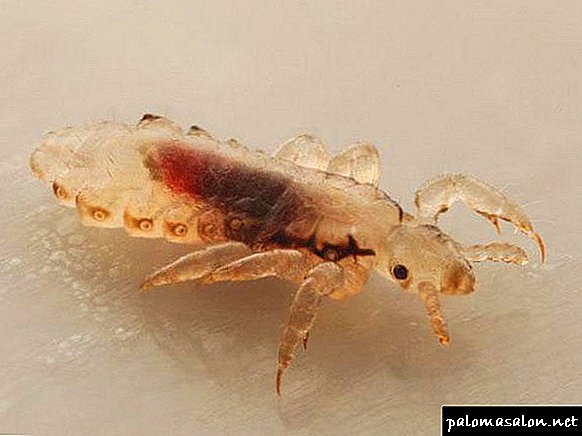
Longevity without a person depends on how long it can last without food.
The lifespan of an adult louse is thirty days. It is during this time that the female lays about ninety eggs. After the incubation period (7–10 days), the nits hatch. In the next ten days turns into an adult. Then the cycle repeats again.
Outside of hair, the parasite lives no more than four days, and then provided that the ambient temperature is not below 23 degrees. When the air temperature reaches 30 ° C, the parasitic individual lives only twenty-four hours outside the human head. When the ambient temperature drops to 10 ° C, the louse can live for 10–12 days, since the insect activates protective mechanisms and it hibernates. At what temperature lice and nits die, you will find on our website.
The head parasites are insects, which are characterized by a constant feeling of hunger. She eats four times a day.
With regards to nits (lice eggs), in this case the situation is different. A nit, enclosed in a dense shell, can stay alive without a person for 3-4 days and hatch only when there are favorable conditions for survival.
Third myth
Head lice can get infected by pets. Not true! Head lice live only in human hair and are not transmitted to humans from pets. The only source of power for head lice is human blood.
There are lice infecting cats and dogs, as well as many other louse subspecies, but for humans they are not contagious. Therefore, there is no reason to treat pets if someone in the family has infected pediculosis.
Can lice live in things
Tried all the available tools in the fight against head lice, and the problem of lice arises again. What is the matter?
Blood-sucking insects are able to live and breed not only on human hair - this is a fact.
Lice live in pillows and other textile things. After carefully studying the information about the habitat of parasites, you can quickly find ways to destroy them.
 Lice live in textiles, namely:
Lice live in textiles, namely:
- clothes,
- bed linen,
- upholstery of sofas, armchairs,
- cushions (and not always feather).
Pediculosis pathogens feed only on human blood. Consequently, their habitat is closely intertwined with human skin.
The most common type of parasite is the head louse. As a rule, it lives in hairline, but it also happens that the parasite settles in bedclothes, for example, in pillows.
Important! The head parasite outside the hairline does not live for long. Twenty-four hours later, the louse dies without food, which is why this type of parasite tries to return from the pillow to human hair as quickly as possible.
Linen lice can go without food for a longer time. Therefore, they can most often be found:
- on clothes, in particular, on underwear,
- on upholstered furniture (especially upholstered in a sofa and bed),
- bed linen (pillows, blankets, mattress).
The clothes louse lives only on clothes. As soon as a person puts on an infected outfit, small blood-sucking insects immediately begin to bite him.
It is important to understand that pediculosis pathogens are not always populated in bed linen and pillows. Textile things often infect fleas, bedbugs. One can distinguish some representatives of the parasite squad from others by the following criteria:
- The flea jumps, but the louse does not.
- Lice nits can be seen only in thick hair, and worm parasites leave nits in the seams and pockets of clothing.
Is it possible to get lice without contact with the person?
The problem of pediculosis is quite common, because many people care about the question, is it possible to catch lice without contact with a person?
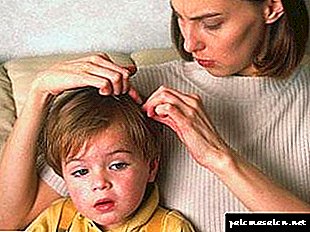 The answer to this exciting question is positive. Consider the possible ways of infection:
The answer to this exciting question is positive. Consider the possible ways of infection:
- Through wearable things, if a person infected with head lice wore them before you.
- Through the use of combs and other styling items (especially often in this way infection occurs in hairdressing salons).
- Through scarves and hats, which previously wore a man with lice.
- Through the operation of bed linen in trains and hotels.
- Swimming in the river (the parasite lives in fresh water for up to two days).
- Occupations in the pool (if there was a person with a pediculosis who was swimming there).
- Maintenance of common items in a kindergarten, camp or school.
Regardless of the habitat under favorable conditions (air temperature, humidity), the development of nits ends with the appearance of the parasite larvae.
Interesting fact. Adult lice overcomes a distance of 50 cm in one minute. This ability to move quickly, helps parasites to quickly run from one person to another, even without close contact.
There is an opinion that a short-haired person cannot get head lice. This is not quite true. Even a bald man can get lice. But the parasites very quickly leave such a host, since they simply have nothing to cling to and lay eggs.
The animal quickly becomes infected with fleas, catching the parasites from other animals on the hair, catching it through sand and water. To transfer the nits to fleas to humans, an animal cannot.
Learn more about pediculosis thanks to our articles:
Useful videos
Why do lice appear on the head?
Lice. Causes and treatment.
How much do lice live outside the human head?
Head lice survive only by their masteron which they parasitize. Can and how much lice live outside the person? Each type of insect can only live on a particular mammal.
Head human louse will never parasitize on horseback. Just like those insects that live on animals will never go to humans.
Bloodsucking insects feed frequently and in small portions, and females bite more often than males, but how many lice can live without a person?
Powerless head louse in the environment can exist without a person for about 2 days, more precisely, about 55 hours - that's the whole term, how many lice without a person live.
Fourth myth
Head lice can become infected through hats, combs, bed linen, etc. True, but extremely rare! Only on the scalp of a louse has ideal conditions for existence - a suitable temperature and nutrition. Outside this ideal environment, she can survive just a couple of days.
To date, there are a variety of tools to combat head lice. But since the 80s. Twentieth century. As a result of mutations in lice, pyrethrin resistance, one of the insecticides widely used in pediculosis, is increasing.
The American Academy of Pediatrics (The American Academy of Pediatrics) published a handbook on the diagnosis and treatment of pediculosis (2002) stresses that it was the abuse of pyrethroid insecticides (pyrethrin and permetryne) that largely led to the development of resistance to them.
Therefore, to combat lice, it is advisable to use new tools with a physical principle of action. They guarantee high efficiency after the first use and are safe for children.
Expert opinion
Ilya BLEZDOV, dermatovenerologist: Pediculosis is a fairly common disease. Thus, in the United States, Centers for Disease Control and Prevention (CDC) annually register 6–12 million cases of head lice.
For many years, special chemicals containing insecticides (malathion, phenotrin, permethrin) were used to treat pediculosis. As a rule, they had to be applied twice, taking a week-long break between applications.
Reuse is due to the fact that insecticides act on the nervous system of lice, and the formation of the nervous system occurs on the third day of egg development.
By the way, that is why neurotoxic insecticides are ineffective against nits (the nervous system does not have time to form yet), and the larvae that have emerged from surviving eggs become resistant (resistant) to the repeated action of permethrin, malathion and phenotrin.
Currently used insecticides have a number of disadvantages:
- high price,
- some drugs can not be used more than three times
- between applications, a relapse of the disease may occur, therefore, it is necessary to daily comb the nits from the child’s hair
- restriction of use in children under one year of age, pregnant and lactating women, people suffering from bronchial asthma or allergies, without consulting a doctor.
The increasing resistance of lice to traditional neurotoxic insecticides revealed the need to create anti-pediculosis drugs with a fundamentally different, physical principle of action.
For example, a well-proven antiparasitic drug in the form of a spray for local use, created on the basis of a two-phase dimethicone. A unique mixture of different viscosities penetrates deep into the respiratory system of lice and larvae, as well as into the respiratory orifices of nits and completely displaces oxygen.
Thanks to a special formula, the use of the drug makes it easy to comb out dead insects even in long and curly hair, and also provides additional care for the hair and scalp.
Due to its ease of use, pleasant odor and excellent tolerability, a spray with a biphasic dimethicone is perfect for the treatment of head lice in adults and children from 3 years old.

 The development of nits lasts about 8 days. Then there are insects, which are called nymphs. They are a bit like adults, but they have a lighter shade. The nymph is smaller and has an underdeveloped reproductive system.
The development of nits lasts about 8 days. Then there are insects, which are called nymphs. They are a bit like adults, but they have a lighter shade. The nymph is smaller and has an underdeveloped reproductive system.